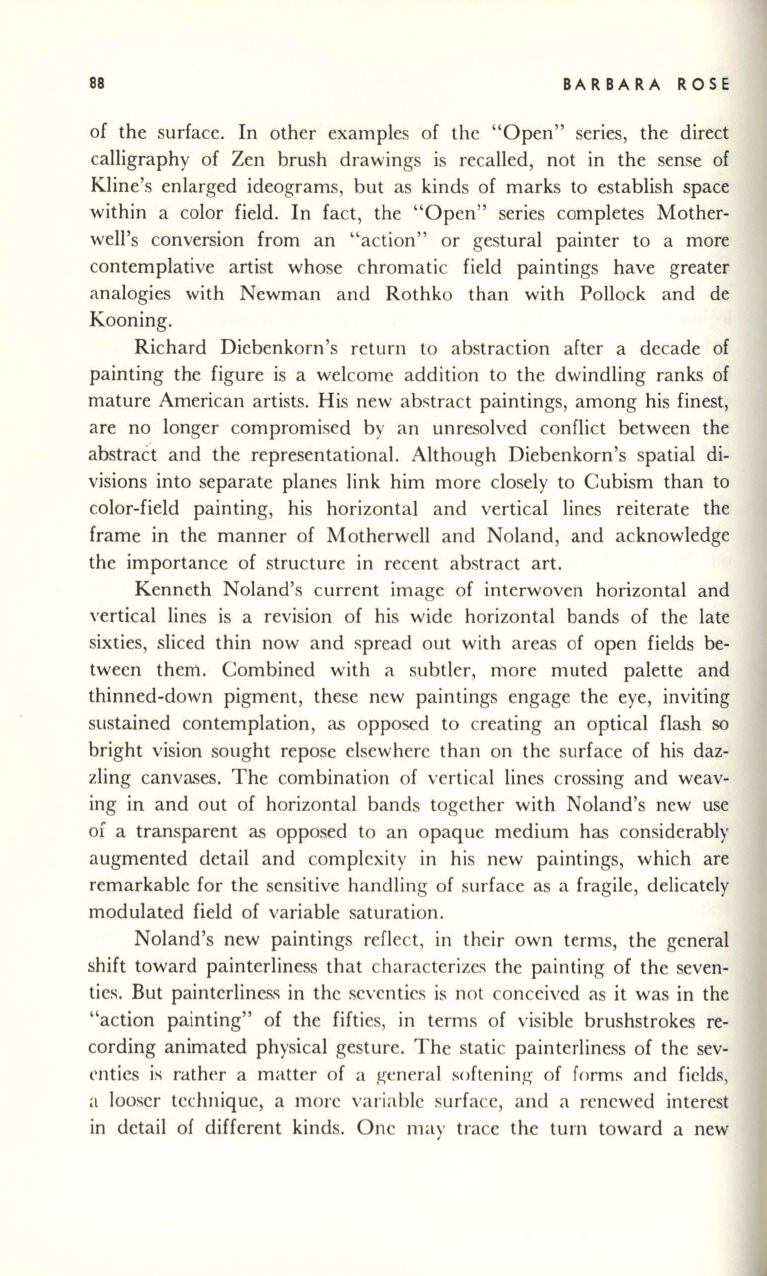
88
BARBARA ROSE
of the surface. In other examples of the "Open" series, the direct
calligraphy of Zen brush drawings is recalled, not in the sense of
Kline's enlarged ideograms, but as kinds of marks to establish space
within a color field. In fact, the "Open" series completes Mother–
well's conversion from an "action" or gestural painter to a more
contemplative artist whose chromati c field paintings have greater
analogies with Newman and Rothko than with Pollock and de
Kooning.
Richard Diebenkorn's return to abstraction after a decade of
painting the figure is a welcome addition to the dwindling ranks of
mature American artists. His new abstract paintings, among his finest,
are no longer compromised by an unresolved conflict between the
abstract and the representational. Although Diebenkorn's spatial di–
visions into separate planes link him more closely to Cubism than to
color-field painting, his horizontal and vertical lines reiterate the
frame in the manner of Motherwell and Noland, and acknowledge
the importance of structure in recent abstract art.
Kenneth Noland's current image of interwoven horizontal and
vertical lines is a revision of his wide horizontal bands of the late
sixties, sliced thin now and spread out with areas of open fields be–
tween them. Combined with a subtler, more muted palette and
thinned-down pigment, these new paintings engage the eye, inviting
sllstained contemplation, as opposed to creating an optical flash so
bright vision sought repose elsewhere than on the surface of his daz–
zling canvases. The combination of vertical lines crossing and weav–
ing in and out of horizontal bands together with Noland's new use
of a transparent as opposed to an opaque medium has considerably
augmented detail and complexity in his new paintings, which are
remarkable for the sensitive handling of surface as a fragile, delicately
modulated field of variable saturation.
Noland's new paintings reflect, in their own terms, the general
shift toward painterliness that characterizes the painting of the seven–
ties. But painterliness in the seventies is not conceived as it was in the
"action painting" of the fifties, in terms of visible brushstrokes re–
cording animated physical gesture. The static painterliness of the sev–
enties is rather a matter of a g-eneral softening- of forms and fields ,
a looser technique, a more variable surface, and a renewed interest
in detail of different kinds. One may trace the turn toward a new


